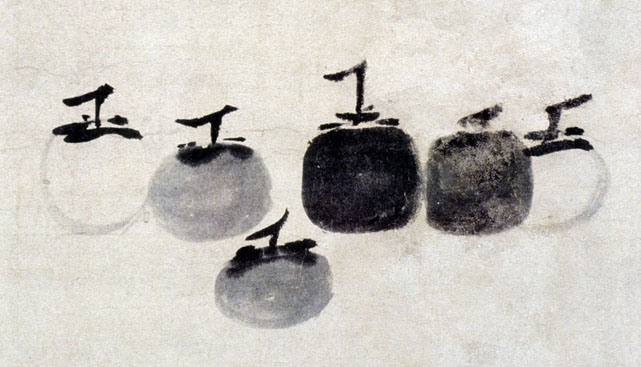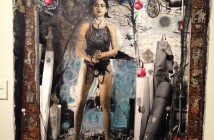
Precise gestures offer a sense of familiarity — perhaps the shape is a common character in Chinese. The stems must be an abstraction of language. Does each stem mean a different word? Do they mean anything? How do we extract meaning from gestures like these? Why do I feel that there must be any meaning at all? What does it mean to reference language without fully engaging in a dialectic? What about this little sketch is making me ask so many questions?
Our eyes read the fruits as individuals. One is smooth and hard, another ripe and juicy. I project my own delusion of a perfect persimmon onto the ghost fruit on the left, rendered from a light sweep of water. The loose, unpolished qualities of the sketch are important. The artist’s hand is exposed, his space is implied but not specific. The relationship between the shapes and the background and the negative space between the fruits is ambiguous and allows us to establish our own relationship with the anonymous fruit.
Muqi was a 13th century monk during the Song Dynasty who was known for his simple compositions and extraordinary gestural precision. Chinese historian Arthur Waley once described the piece as "passion… congealed into a stupendous calm." It was apparently very popular with art history students in the mid-twentieth century who perceived it as a calm and cool opposite to the loud, pompous American work coming out of New York at the time. Professor Richard Barnhart from Yale has an interesting discussion of that phenomenon. [PDF]
I am astounded at my reaction to this little sketch. Its simple shapes and implications have absorbed me, and I am immersed in its scale-less, colorless world. I love its language and I envy its simplicity.
Image information:
Muqi (Fa Chang, Southern Song Dynasty)
Six Persimmons, 13th century
Blue-black ink on paper




